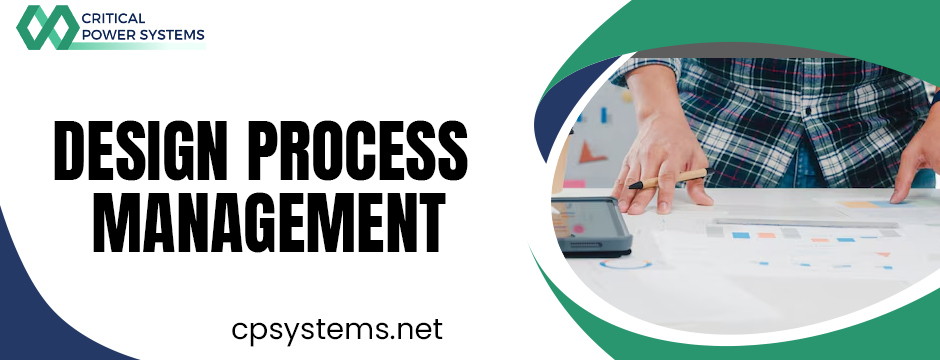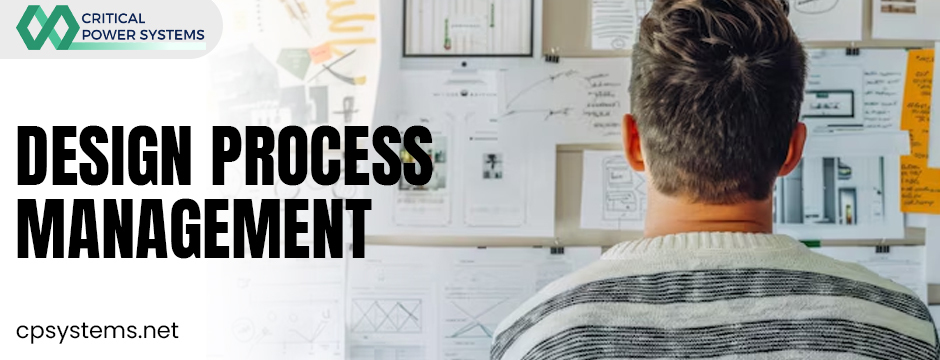In today’s fast-paced digital economy, successful product launches depend on one thing above all: seamless collaboration. When designers, developers, and stakeholders are in sync, magic happens—projects move faster, creativity flourishes, and customer satisfaction soars. But when silos creep in? Deadlines slip, budgets balloon, and trust erodes. At Critical Power Systems, we’ve seen it firsthand—great ideas die not because they’re flawed, but because teams can’t communicate or align. That’s where strong design process management and cross-functional strategy come into play.
In this guide, we break down practical ways to streamline your project and design management processes and align the three critical groups driving your digital transformation: designers, developers, and stakeholders.

Why Cross-Team Collaboration is Hard (and Why It Matters)
Designers focus on user experience and visual aesthetics. Developers concentrate on performance, logic, and technical feasibility. Stakeholders care about business goals, customer needs, and bottom-line impact.
Naturally, these perspectives don’t always align. Without a structured process, miscommunication can derail projects. Here’s why collaboration is essential:
- Faster Time-to-Market
Teams that collaborate efficiently reduce back-and-forth and avoid costly reworks. - Higher Product Quality
When everyone’s input is considered early, the end product meets more user needs and business goals. - Better Use of Resources
Clear expectations prevent duplication of effort and misaligned priorities.
The Foundation: Unified Design Process Management
Before anything else, set up a design process that serves as a single source of truth. Here’s how:
1. Create a Shared Project Roadmap
Use collaborative tools like Asana, ClickUp, or Monday.com to centralize tasks and timelines. Ensure it includes:
- Design milestones
- Development checkpoints
- Stakeholder reviews
- Launch deadlines
2. Define Clear Roles and Ownership
Nothing breeds confusion like unclear responsibilities. Assign ownership for:
- Design concepts
- Front-end/back-end implementation
- Feedback collection
- Final sign-offs
Use RACI matrices (Responsible, Accountable, Consulted, Informed) to keep roles crystal clear.
3. Establish a Central Feedback Loop
Scattered feedback is the enemy of progress. Create a feedback workflow using:
- Figma or InVision for design comments
- Slack or Microsoft Teams channels per project
- Loom videos for async explanations
Let everyone know when and how to give input—limit feedback windows to prevent endless revisions.
Bridging the Gap: Aligning Designers & Developers
The divide between design and dev is often where things break down. Here’s how to fix it:
1. Collaborate Early and Often
Don’t let designers work in isolation. Bring developers into design sprints early so they can flag technical limitations or opportunities. Likewise, allow designers to peek into dev standups.
2. Use Developer-Friendly Design Tools
Platforms like Figma and Zeplin translate designs into code-friendly specs. This reduces back-and-forth and ensures pixel-perfect implementation.
3. Create a Shared Language
Develop a mini glossary of terms. What’s “padding” to a designer is “margin” to a developer. Agree on terms, components, and naming conventions upfront.
4. Maintain a Design System
Use design systems to ensure consistency and scalability. A good system:
- Speeds up both design and coding
- Minimizes bugs from interpretation gaps
- Aligns branding across channels
Engaging Stakeholders Without Friction
Stakeholders hold the purse strings and final approval. But involving them too early or too often can overwhelm the design process.
1. Set Expectations from Day One
During kickoff, define stakeholder involvement:
- What decisions they’re involved in
- How often they’ll be updated
- What format they’ll receive designs in
2. Create Digestible Updates
Stakeholders don’t need 50-slide decks. Instead, use:
- High-level mockups with context
- Short video walkthroughs (2–3 mins)
- Monthly executive summaries
3. Speak Their Language
Focus on business outcomes, not design details. Instead of “We moved the CTA 10px right,” say “We optimized the call-to-action based on user behavior to improve conversions.”
4. Limit Scope Creep
Be diplomatic but firm. Document scope in your project and design management plan. If changes are requested, review the impact on timeline and budget before committing.
Sales and Marketing Impact: Why This Matters to Business
From a sales and marketing standpoint, poor alignment across teams delays launches, frustrates customers, and eats into budgets. On the flip side, streamlined cross-team collaboration leads to:
- Faster product rollouts
Launch campaigns and features in sync, maximizing impact. - Improved brand consistency
Design and dev alignment ensures a seamless user experience across channels. - Higher client confidence
Stakeholders love teams that are organized, responsive, and professional. That leads to better retention and referrals.
At Critical Power Systems, our solutions go beyond tech—we focus on aligning the human side of digital transformation too. That’s how we help businesses scale smartly and sustainably.
Quick Tips for Better Cross-Team Collaboration
- Use one source of truth (Notion, Confluence, or Miro)
- Run joint sprint planning every two weeks
- Hold weekly design-dev standups
- Set up a feedback SLA (e.g., 48-hour turnaround)
- Celebrate wins as one team, not in silos

Final Thoughts
Cross-team collaboration isn’t just a soft skill—it’s a business driver. With the right structure, tools, and mindset, aligning designers, developers, and stakeholders becomes not only manageable but a competitive advantage. If you’re ready to streamline your project and design management processes and unlock faster, smoother product delivery, Critical Power Systems can help. Let’s build better—together.
Frequently Asked Questions
1. What is design process management, and why is it important?
Design process management is the structured coordination of design tasks, feedback, and team roles. It ensures consistency, speeds delivery, and improves collaboration.
2. How can I improve communication between designers and developers?
Use collaborative tools like Figma, involve devs early, and create a shared terminology or component library to reduce misinterpretations.
3. How often should stakeholders be involved in the design process?
Involve them at key milestones—kickoff, mid-review, and final approval. Avoid involving them in daily iterations unless necessary.
4. What are the biggest barriers to cross-team collaboration?
Common barriers include misaligned goals, unclear roles, siloed communication, and a lack of shared tools or terminology.
5. How does cross-functional collaboration benefit marketing efforts?
It leads to consistent branding, faster product launches, and better customer experiences—crucial for successful campaigns and conversions.

